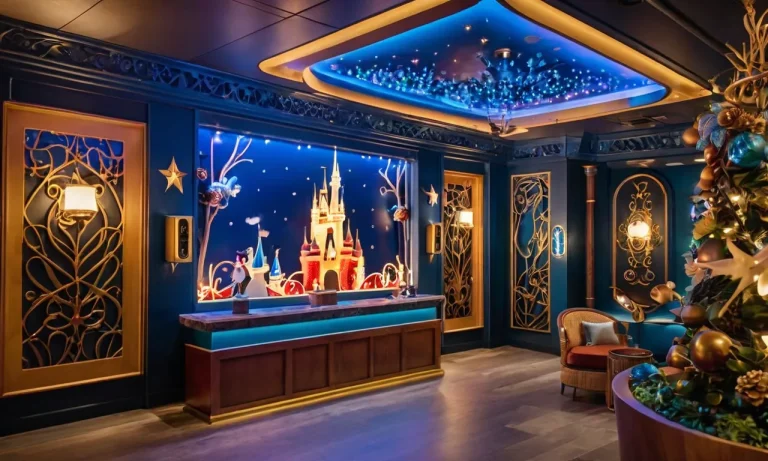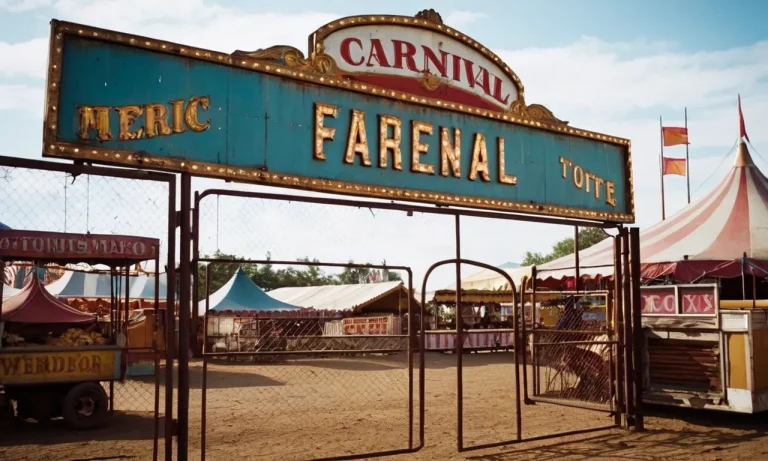How Gothic Sculpture Differs From Romanesque Sculpture
Gothic sculpture emerged in the 12th century as medieval Europe transitioned from the Romanesque to the Gothic period. If you’re short on time, here’s a quick answer: Gothic sculpture differed from Romanesque sculpture in its greater naturalism, emotion, and variety of pose and subject matter.
In this comprehensive article, we will explore the key differences between Gothic and Romanesque sculpture in detail. We will look at how Gothic sculpture builds on yet diverges from the Romanesque style that preceded it in medieval art history.
Expect an in-depth analysis of the distinguishing stylistic qualities of each tradition as well as a discussion of the social and religious context that shaped these iconic art forms.
Naturalism and Realism
Gothic sculpture and Romanesque sculpture both exhibit a commitment to portraying the human form, but they differ in their approaches to naturalism and realism. Gothic sculpture, which emerged in the 12th century, sought to create lifelike figures that were more realistic and naturalistic than the stylized forms of Romanesque sculpture.
Lifelike Proportions and Detail
Gothic sculpture aimed to capture the human body with greater accuracy, emphasizing lifelike proportions and intricate details. Sculptors of this period focused on realism, striving to create figures that closely resembled the human form.
They paid particular attention to anatomical details, such as muscles, facial features, and drapery. This attention to detail made Gothic sculpture appear more natural and realistic than the more abstract forms of Romanesque sculpture.
Expressive Features and Emotion
Another notable difference between Gothic and Romanesque sculpture lies in the expression of emotions. Gothic sculptors sought to convey a range of emotions through their work, allowing viewers to connect with the figures on a deeper level.
Faces were often depicted with expressive features, such as furrowed brows, smiling or frowning mouths, and teary eyes. This emphasis on emotion added a sense of humanity and relatability to Gothic sculptures, setting them apart from the more stoic and less emotive Romanesque sculptures.
Varied Poses and Perspectives
Gothic sculpture also introduced a greater variety of poses and perspectives. Sculptors experimented with dynamic poses, capturing figures in motion or engaging in various activities. This departure from the static and rigid poses of Romanesque sculpture added a sense of vitality and energy to Gothic works.
Additionally, the use of different perspectives, such as foreshortening and three-dimensional space, created a more immersive and realistic experience for the viewer.
Subject Matter and Themes
Gothic sculpture and Romanesque sculpture both derive their subject matter and themes from religious sources, but there are distinct differences between the two styles.
Focus on Biblical Stories
Gothic sculpture places a strong emphasis on depicting biblical stories and figures. The intricate stone carvings found in Gothic cathedrals often depict scenes from the Old and New Testaments, such as the Creation of Adam and Eve or the Crucifixion of Jesus.
These sculptures served as a way to educate the illiterate masses about religious stories and to inspire devotion and awe.
In contrast, Romanesque sculpture also features biblical subjects, but they tend to be more abstract and less detailed. The focus of Romanesque sculpture is often on conveying spiritual ideas rather than telling a specific story.
For example, Romanesque sculptures may depict the concept of salvation or the struggle between good and evil.
Emerging Secular Subjects
While religious themes dominate both Gothic and Romanesque sculpture, Gothic sculpture began to include secular subjects as well. This shift reflects the changing cultural and societal attitudes of the time.
Gothic sculptures started to depict scenes from everyday life, such as tradespeople working or musicians playing instruments. These secular subjects added a touch of realism and humanity to the sculptures, making them more relatable to the general population.
Romanesque sculpture, on the other hand, remained primarily focused on religious subjects and did not incorporate secular themes to the same extent. The Romanesque style emphasized the divine and the spiritual, conveying a sense of otherworldliness rather than a connection to the earthly realm.
Wider Range of Christian Imagery
Gothic sculpture also introduced a wider range of Christian imagery compared to Romanesque sculpture. Gothic sculptures often depicted saints, angels, and other figures from Christian mythology. These intricate sculptures showcased the imagination and creativity of the artists, as well as their devotion to their faith.
Romanesque sculpture, while still incorporating Christian imagery, tended to focus on a limited number of popular figures. Saints and biblical figures such as Christ, Mary, and the apostles were commonly represented.
The emphasis was on conveying the spiritual power and majesty of these figures rather than exploring a wide variety of Christian iconography.
| Gothic Sculpture | Romanesque Sculpture |
|---|---|
| Emphasis on biblical stories and figures | Abstract representation of religious themes |
| Inclusion of secular subjects | Primary focus on religious subjects |
| Wide range of Christian imagery | Limited number of popular figures |
For more information on Gothic and Romanesque sculpture, you can visit The Metropolitan Museum of Art’s website. They have a comprehensive collection of sculptures from both styles, allowing you to explore the intricacies and differences between them.
Architectural Context
When comparing Gothic sculpture to Romanesque sculpture, it is important to understand the architectural context in which these sculptures were created. Both styles emerged during the medieval period, but they were influenced by different architectural movements and served different purposes.
Romanesque Sculpture on Churches
In Romanesque architecture, churches were typically massive and fortress-like, with thick walls and small windows. The sculptures were often integrated into the façade of the church, depicting biblical scenes and figures.
These sculptures were meant to educate and inspire the illiterate congregation, as well as to convey the power and authority of the Church. The figures in Romanesque sculpture were often stylized and rigid, with little attention to naturalistic detail.
Integrated Gothic Architectural Sculpture
Gothic architecture, on the other hand, was characterized by its use of pointed arches, ribbed vaults, and flying buttresses. The sculptures in Gothic architecture were not just decorative elements, but integral parts of the building’s structure.
They were often placed on the exterior of the building, in the form of gargoyles, grotesques, and other decorative features. These sculptures served both practical and symbolic purposes, helping to support the weight of the building and also conveying religious messages to the viewer.
More Intricate Gothic Portals and Facades
One of the key differences between Gothic and Romanesque sculpture is the level of intricacy and detail. Gothic sculptures were often found on the portals and facades of churches, which were highly ornate and elaborate.
These sculptures depicted scenes from the Bible, as well as saints and other religious figures. The figures in Gothic sculpture were more naturalistic and fluid, with a greater emphasis on movement and emotion. The use of light and shadow in Gothic sculpture also added depth and drama to the artwork.
Societal Shifts
Changes in Patronage and Purpose
One of the key differences between Gothic sculpture and Romanesque sculpture lies in the societal shifts that influenced their creation. In the Romanesque period, the primary patrons of sculpture were religious institutions such as monasteries and churches.
The purpose of Romanesque sculptures was to serve as didactic tools, depicting biblical stories and moral lessons to a largely illiterate population. On the other hand, Gothic sculpture saw a shift in patronage, with wealthy merchants and guilds becoming major patrons.
This change in patronage resulted in a shift in purpose, with Gothic sculptures often serving as symbols of civic pride and displaying the wealth and status of the patrons.
Rise of Cities and Trade Guilds
The rise of cities and trade guilds during the Gothic period had a profound impact on the development of sculpture. As urban centers grew, so did the demand for monumental sculptures to adorn the newly constructed cathedrals and public buildings.
The establishment of trade guilds further fueled this demand, as guilds competed with one another to commission the most impressive sculptures for their respective cities. This competitive atmosphere led to a flourishing of artistic innovation and experimentation in Gothic sculpture.
Expression of Identity and Status
Gothic sculpture placed a strong emphasis on the expression of identity and status. Sculptors sought to create lifelike and individualized representations of their subjects, capturing their unique features and personalities.
This focus on individuality and realism was a departure from the more stylized and symbolic Romanesque sculptures. Additionally, Gothic sculptures often incorporated intricate details and elaborate drapery to further convey the wealth and social standing of the depicted individuals.
This emphasis on personal identity and social status reflected the growing importance of individualism and social hierarchies during the Gothic period.
Stylistic Influences
Gothic sculpture is a distinct art form that emerged in Europe during the medieval period. It is characterized by its intricate detailing, verticality, and an emphasis on naturalism. In comparison, Romanesque sculpture, which predates Gothic sculpture, is known for its heavy, solid forms and a lack of realistic proportions.
The differences between the two styles can be attributed to various factors, including classical and Byzantine traditions, local schools and workshops, and the international spread of the Gothic style.
Classical and Byzantine Traditions
Gothic sculpture was heavily influenced by the classical and Byzantine traditions. While Romanesque sculpture drew inspiration from Roman art, Gothic sculptors sought to revive the grandeur and elegance of classical sculpture.
They incorporated elements such as drapery, naturalistic anatomy, and a sense of movement into their works. The influence of Byzantine art can be seen in the delicate detailing and intricate designs that became characteristic of Gothic sculptures.
Local Schools and Workshops
Another factor that contributed to the differences between Gothic and Romanesque sculpture was the presence of local schools and workshops. In the Gothic period, cities and regions across Europe developed their own unique styles and techniques.
For example, the Chartres Cathedral in France is known for its distinctive French Gothic style, while the Cologne Cathedral in Germany showcases a more Germanic influence. These local schools and workshops allowed for the exchange of ideas, resulting in diverse interpretations of Gothic sculpture.
International Spread of Gothic Style
The international spread of the Gothic style further contributed to the differences between Gothic and Romanesque sculpture. As Gothic architecture gained popularity, so did the demand for Gothic sculptures.
Sculptors and craftsmen traveled across Europe, bringing their skills and techniques to different regions. This led to the exchange of ideas and the adoption of new styles and influences. The international spread of the Gothic style allowed for the development of regional variations, resulting in a rich and diverse range of Gothic sculptures.
Conclusion
As we have seen, Gothic sculpture differs markedly from preceding Romanesque sculpture in both style and context. Where Romanesque sculpture tends to be static and hieratic, Gothic sculpture is animated by a new naturalism and concern for human expression.
This reflects the changing society of the High and Late Middle Ages, as medieval culture moved beyond the monastic world that shaped Romanesque art and embraced more secular subjects and motifs. Yet Gothic sculptors also continued to explore profoundly religious themes, pairing spiritual narratives with an emotional immediacy unseen in earlier centuries.
With its distinctive elegance, grace, and reverence for the natural world, Gothic sculpture leaves an enduring legacy that continues to inspire artists and artwork lovers today.








